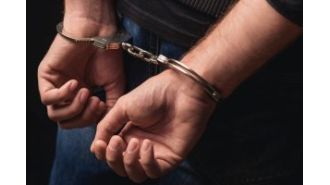Illinois to Take Emergency Action to Halt Isolated Timeouts in Schools
Gov. J.B. Pritzker called the practice of secluding children “appalling” and said he will work with legislators to end it.

The Illinois State Board of Education announced Wednesday that it will take emergency action to end the seclusion of children alone behind locked doors at schools, saying the practice has been “misused and overused to a shocking extent.”
Responding to a Chicago Tribune and ProPublica Illinois investigation published a day earlier, Gov. J.B. Pritzker called the isolation of children in the state “appalling” and said he directed the education agency to make emergency rules for schools. He will then work with legislators to make the rules into law, he said.
The rules would not totally ban the use of timeout rooms but would end isolation. The state board said children would be put in timeout only if a “trained adult” is in the room and the door is unlocked. Timeouts also must be used only for therapeutic reasons or to protect the safety of students and staff, the board said.
The board also said it will begin collecting data on all instances of timeout and physical restraint in Illinois schools and will investigate “known cases of isolated seclusion to take appropriate disciplinary and corrective action.” State officials had not previously monitored these practices.
The ProPublica Illinois and Tribune investigation, based on tens of thousands of school records, revealed children were put in isolation every school day for reasons that violate the law.
“Isolated seclusion will end now,” Pritzker said in a written statement. “It traumatizes children, does lasting damage to the most vulnerable and violates the most deeply held values of my administration and the State of Illinois. The use of this unacceptable practice in districts around the state for several years is appalling, and I am demanding complete and immediate accountability.”
Earlier in the day, Pritzker told reporters that the action couldn’t wait even “another 24 hours,” and that the rules would be filed Wednesday. The ban will apply to any school that serves public school students, including private schools that students attend when they can’t be served by their home districts. Emergency rules stay in effect for up to 150 days unless an exception is made.
At least one lawmaker said he plans to introduce legislation by the end of the week that would ban isolated timeout in Illinois; he said he has bipartisan support.
State schools Superintendent Carmen Ayala called the investigation’s findings “appalling, inexcusable and deeply saddening.”
“ISBE condemns the unlawful use of isolated seclusion, and we will take immediate steps to ensure the traumatic treatment described in the investigation never happens to another Illinois student,” Ayala said in a statement.
Under current Illinois law, it’s legal for school employees to seclude students in a separate space — to put them in isolated timeout — if the students pose a safety threat to themselves or others.
For the investigation published Tuesday, ProPublica Illinois and the Tribune obtained records documenting more than 20,000 incidents of seclusion from the 2017-18 school year and through early December 2018.
Of those, about 12,000 included enough detail to determine what prompted the timeout, and in more than a third of those cases, school employees documented no safety reason for the seclusion.
“This is the first time the governor has stepped up and taken a strong position on this issue. He has succeeded in elevating this in a way we’ve never seen before. It’s really historic,” said Zena Naiditch, who leads Equip for Equality, which acts as a watchdog for people with disabilities in Illinois. “We are optimistic that the state will finally tackle something that has been ignored for decades.”
Naiditch said the group plans to investigate some schools to see firsthand how they are using restraint and seclusion.
Illinois law requires school employees to keep detailed records of the use of isolated timeout. The records obtained by reporters conveyed the distress of students who were put in seclusion rooms alone, sometimes for hours. Aides logged the children crying, screaming, begging to be set free, ramming their heads into the walls and prying at the doors.
The moment-by-moment logs often include the children’s own words while in seclusion.
“Please someone respond to me. … I’m sorry I ripped the paper. I overreacted. … Please just let me out. Is anyone out there?” said a student in Effingham.
Reactions to the investigation — particularly to the words and drawings from children who had been in isolated timeout — were strong. Parents, advocates, school employees and state officials expressed shock that seclusion was being used, often as punishment or to force compliance, in schools across Illinois. Some schools referred to students as “serving time.”
The investigation was based on records from more than 100 school districts. Most of the students who were put in seclusion had disabilities, including autism or behavioral or emotional challenges. Their behavior can be challenging, and records show school employees struggling to deal with disruptive and sometimes violent behavior.
State Rep. Jonathan Carroll, D-Northbrook, said he expects to file legislation that would ban the use of isolated timeout in schools altogether. A former special education teacher, Carroll wrote an impassioned blog post about his own experience as a child in seclusion rooms at school, saying that at 45 he still has “nightmares because of this treatment.”
“Isolation was my personal Hell,” he wrote. “I begged my parents to take me out of that school and when they did, it changed my life.”
“It is a battle I must and will fight,” Carroll said. “To the 12-year-old boy who’s still inside of me dealing with this pain, I will do everything in my power to not have others feel the same way.”
Nineteen states prohibit some form of seclusion at school; four ban it outright. Illinois’ law, enacted in 1999, states that schools can seclude children for safety reasons only.
The law was prompted by public outrage over the use of a 3-foot-square plywood box in Pontiac classrooms to isolate children with disabilities in 1989. Illinois temporarily banned the practice as the state studied it and then enacted guidelines.
According to the emergency rules the state board planned to submit Wednesday, all public and private schools will be required to submit data to the board within 48 hours of any instance of isolated timeout or restraint. Further, all school districts will be required to submit data to the state board on instances of timeout and restraint during the current school year and the prior two.
The board said it will take action against any school that was violating the current law, including by using seclusion as punishment. The governor’s office filed complaints on behalf of students named in the investigation by the Tribune and ProPublica Illinois and is going to require that school districts file records to the state board on all uses of isolation or restraint dating to the 2017-18 school year. The complaints will allow the board to expedite the investigative process and require a report within 60 days.
“Clearly the article highlighted unsafe practices that are happening in schools across the state and need to end,” said Kevin Rubenstein, president of the Illinois Alliance of Administrators of Special Education, which represents 1,200 public and private special-education administrators in the state.
“We need to make sure that data is collected from public and private schools and that it is appropriately analyzed to better understand this situation and the supports that students need when they are at their most vulnerable in our schools.”
In addition to seclusion, the emergency rules will address the use of physical restraint, banning restraint types that restrict a student’s ability to breathe, the state board said. The Tribune and ProPublica Illinois have also been examining restraint practices in Illinois, reviewing records and asking officials about its use.
The Illinois Education Association, a teachers union that represents more than 135,000 members, issued a statement supporting the emergency actions.
“Safety is priority number one with our students, especially those who have traumatic pasts and who have special needs,” IEA President Kathi Griffin said in a statement. “Seclusion takes safety out of the mix and adds fear and torment. Calm rooms, or reflection rooms, should provide caring adults, helping to support students and to teach them strategies for self-regulation.”
The Illinois Federation of Teachers, a union representing 103,000 teachers and paraprofessionals, said that it does not support the use of isolation as discipline but that banning the practice doesn’t solve issues of difficult behavior and school discipline. In a written statement, the union said that it wants more discussion and that schools desperately need mental health support for students and better training for teachers and staff.
Darla Knipe, whose son Isaiah was featured in the investigation, said she wasn’t sure what to think after hearing that state officials will ban isolated seclusion of students.
“Will that really be true?” asked Knipe, whose son went to Middlefork School in Danville. “I want to believe it. … I hope they mean what they say and that they will really investigate and something will really be looked at.”






